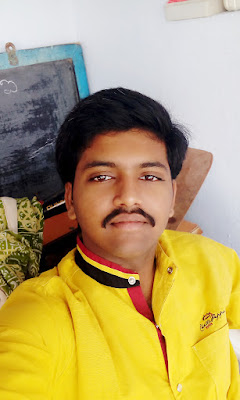Logo of Auto Cad
Ø Now days it is a most popular graphical
oriented designing product.
Ø Basically it was developed by sir auto desk
in 1972.
Ø The tool called r7.later Mr John from U.S.A. started a new organisation
called auto desk in 1980.hedevoleped a product called auto cad.
Ø The first famous product is auto cad 2000.it’s
the first graphical version. With the help of this version we can implement.
v Available versions
:-In auto cad we are having so many popular
versions they are :
I.
Auto cad 2000
II.
Auto cad 2003
III.
Auto cad 2005
IV.
Auto cad
2006&2007
V.
Auto cad
2010&2012
VI.
Auto cad 2014(windows
8 &above versions.)
v Hard
ware required:-To
install auto cad 2010&2012version we need the following hard ware
configuration.
I.
Windows
7 &above OS.
II.
Minimum
RAM capacity is 1GB.But recommended 2GB.
III.
We
need high resolution monitor.
IV.
Need
of a printer.(optional)
V.
Need
p4 or above C.P.U. But recommended dual core and above.
VI.
The
micro processor speed is not less than 1.2G.HZ.
v Available designing modes: - Basically we are having designing
methods like.
I.
Menu
bar.
II.
Command
bar.
Ø Menu
bar: - It is the
fully graphical oriented option .By using this option we can design type of
diagrams without knowing of any syntax .But it is not suitable for learners
.basically it is used by professional.
Ø Command
prompt: - This is
original concept of auto cad designing .it contains the following methods like:
I.
Standard
designing.
II.
Polar
method.
III.
Cortegen
method.
Ø Types of
commands: - In 2010&above versions the commands are mainly classified
into two major categories like:
I.
Administration
command.
II.
Designing
& modification command.
Ø Administration
commands: -
- Units : - With the help of this command we can display deferent designing measurements like:
1. Metric
conversion : -
1 centi meter = 10 milli meters
1
meter = 100 centimetres
1
kilo meter = 1000 meters
2.
Standard conversions : -
1 foot = 12 inches
1yard = 3 feat
1yard = 36 inches
1 mile = 1760 yards
3.
Metric conversions to standard conversions
: -
1 MM = 0.03937 INCHES.
1 CM = 0.39370 INCHES.
1 M = 39.37008 INCHES.
1 M = 3.028084 FEAT.
1 M = 1.09361 YARDS.
1 KM = 1093.6133 YARDS.
1 KM = 0.6213 M.
4.Standard
to metric : -
1 INCH = 2.54 CM
1 FOOT = 30.48 CM.
1YARD = 91.44 CM.
1YARD = 0.9144 M.
1MILE = 1609.344 M.
1 MILE = 1.609344 KM.
a)
Endpoint.
b)
Midpoint.
c) O Centre.
d)
Node.
e)
Quadrant.
f)
Intersection.
g)
Extant ion.
h)
Intersection.
i)
Perpendicular.
j)
Tangent
k)
Nearest.
l)
Apparent intersection.
m)
Parallel.
v Designing
commands : -
Ø Line
family : - in this
category we are having following commands like:
i.
Line.
ii.
M
line.
iii.
PL.
iv.
SPL.
v.
RAY.
vi.
X
Line.
a. Specify starting point.
b. Specify direction.
c. Specify length of the line.
Ø Text
operations: - To
implement all types of operations We are having the following commands like:
a. Text.
b. ED.
c. ST.
d. SC.
e. Mtext
ü BY double click also we can modify
text information.
Arc:
- We can design arc
related diagrams .We can design arc diagrams in two methods.
a) Manual.
b) Centre point specification.








